Between its big-eyed characters and its bright and colourful hand-drawn 2D visuals, Cris Tales could be mistaken for a My Little Pony-adjacent animation project. But beneath the twee exterior of this love-letter to classic Japanese role-playing games there’s an incredibly smart combat system that sees you toss your enemies back and forth through time to turn the tide of battle.
Cris Tales tells the tale of Crisbell, a young orphan in the kingdom of Crystallis. She lives a simple life, tending roses outside of her orphanage, until one day a talking frog named Matias hops along and helps her awaken the time magic within her. Crisbell gains the ability to look into the past, present, and future simultaneously, among other things. When her hometown is attacked by the evil forces of the Time Empress, Crisbell and her friends embark on a quest to save her world from destruction at the vile villain’s hands.
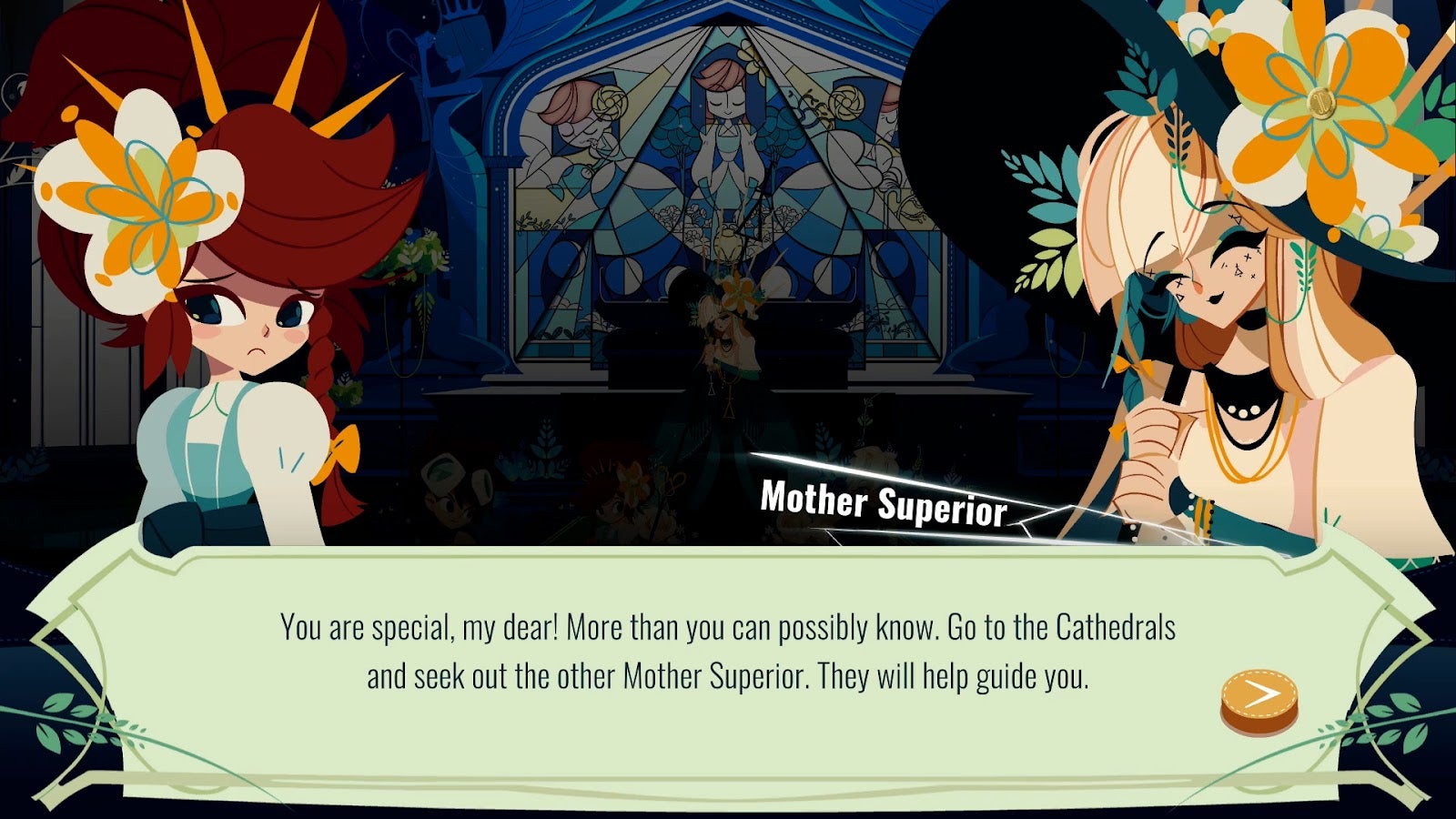
With her gigantic eyes and rosy cheeks, Crisbell is one adorable world saviour. Not only does she look like a character out of one of those weird My Little Pony spin-offs set in an alternate universe where the horses are human, she sounds like one as well. That’s because she’s voiced by actor Kira Buckland, whose credits include a bajillion anime characters as well as video game voices for Twilight Sparkle, Pinkie Pie, Spike, and other Friendship is Magic characters. So yeah, the My Little Pony vibes are strong in Cris Tales. But while friendship plays a big role in the game, time is the magic that makes Cris Tales tick.
Once her time magic is activated, Crisbell’s vision fractures into three distinct segments. The past is to her left, the future to her right, and the present smack dab in the middle. As she walks down the street, the characters and scenery to her left and right transform to reflect these differing timelines. A child on her left becomes a young woman as Crisbell approaches and then a crone as he passes. Pristine buildings in the present become rotted or burned in the future, reflecting the world’s dire straits. Though initially a little disorienting, it didn’t take me long to adjust to this unique way of viewing the world.
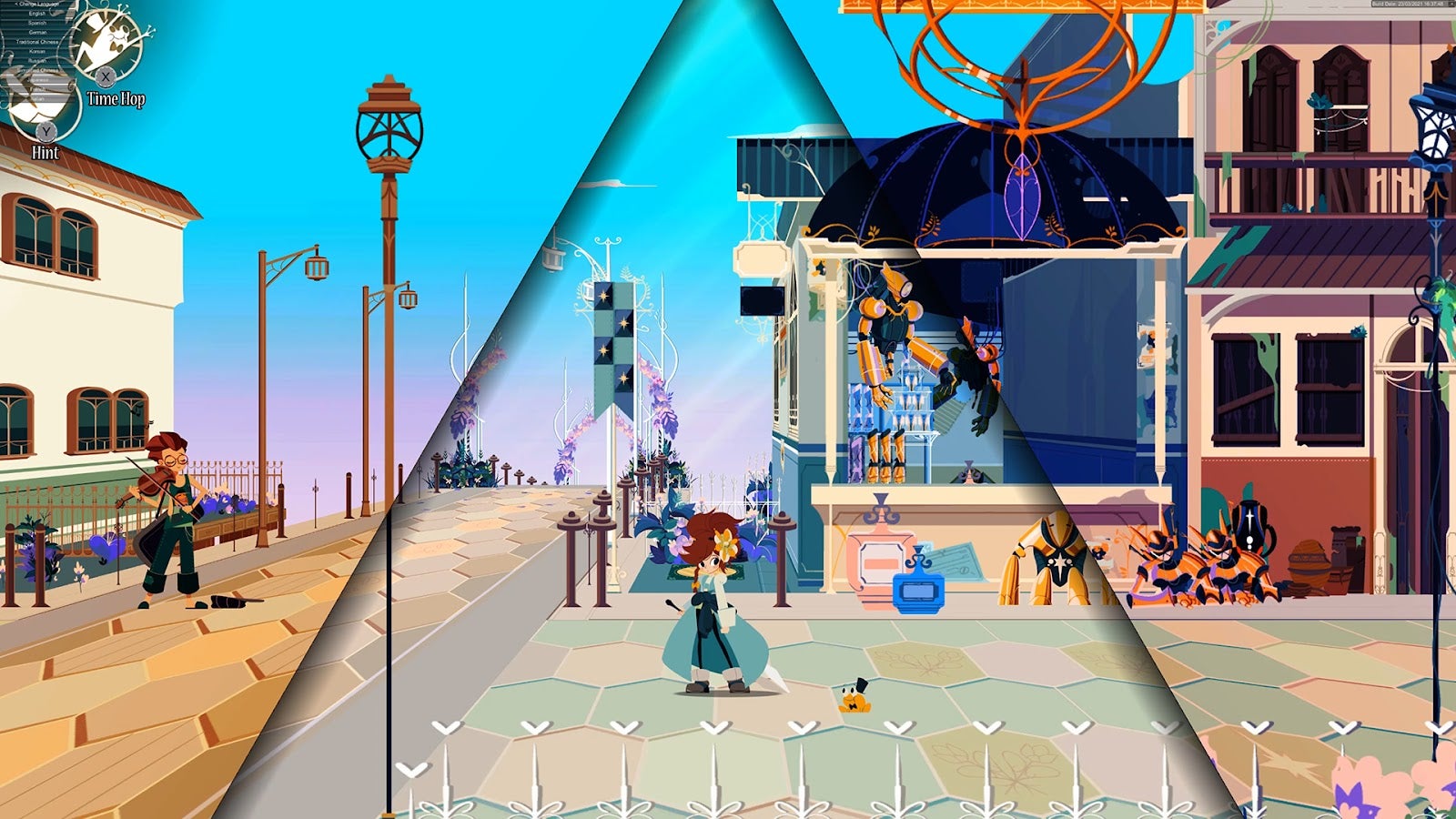
Should Crisbell need to check in on the goings on in the past or future, her near-constant frog companion Matias has the ability to Time Hop. The cute little amphibian in his even cuter top hat casually tears through the fabric of spacetime, becoming a fat old frog in the future or a shimmying tadpole in the past. He can’t stray too far from Crisbell while Time Hopping, but holy hell, a frog is travelling through time.
Combining her Time Sight and Matias’ Time Hops, Crisbell solves problems for the people of her world, as a good Time Mage should. These narrative side quests are relatively easy to solve but help flesh out the game world, letting you get to know the people whose world you’ll be saving, which is always nice. I found the biggest challenge was not losing my way in the game’s sprawling towns. Fortunately, there’s a convenient “hint” button to help get me back on track.
When she discovers several of the buildings in her home town are going to rot apart in the future and the only solution is a special potion requiring a fruit that takes a decade to grow, she sends Matias into the future, where a tree she plants in the present bears fruit. When she’s curious about the relationship of an unlikely couple, Matias the tadpole crawls into the past to eavesdrop on a conversation between the couple’s younger selves.
Being able to witness the past, present, and future of her world unfolding simultaneously gives Crisbell the power to affect change and often leads to her saving the day, but the most poignant moments in the game’s story so far have occured during moments when those powers are inaccessible. While Cris Tale’s narrative is wound around these fantastical time-twisting abilities, it shines when Crisbell learns that she can be a hero without magic. She isn’t special because of what she can do, but who she is as a person. That’s a message that gets me right in the feels.
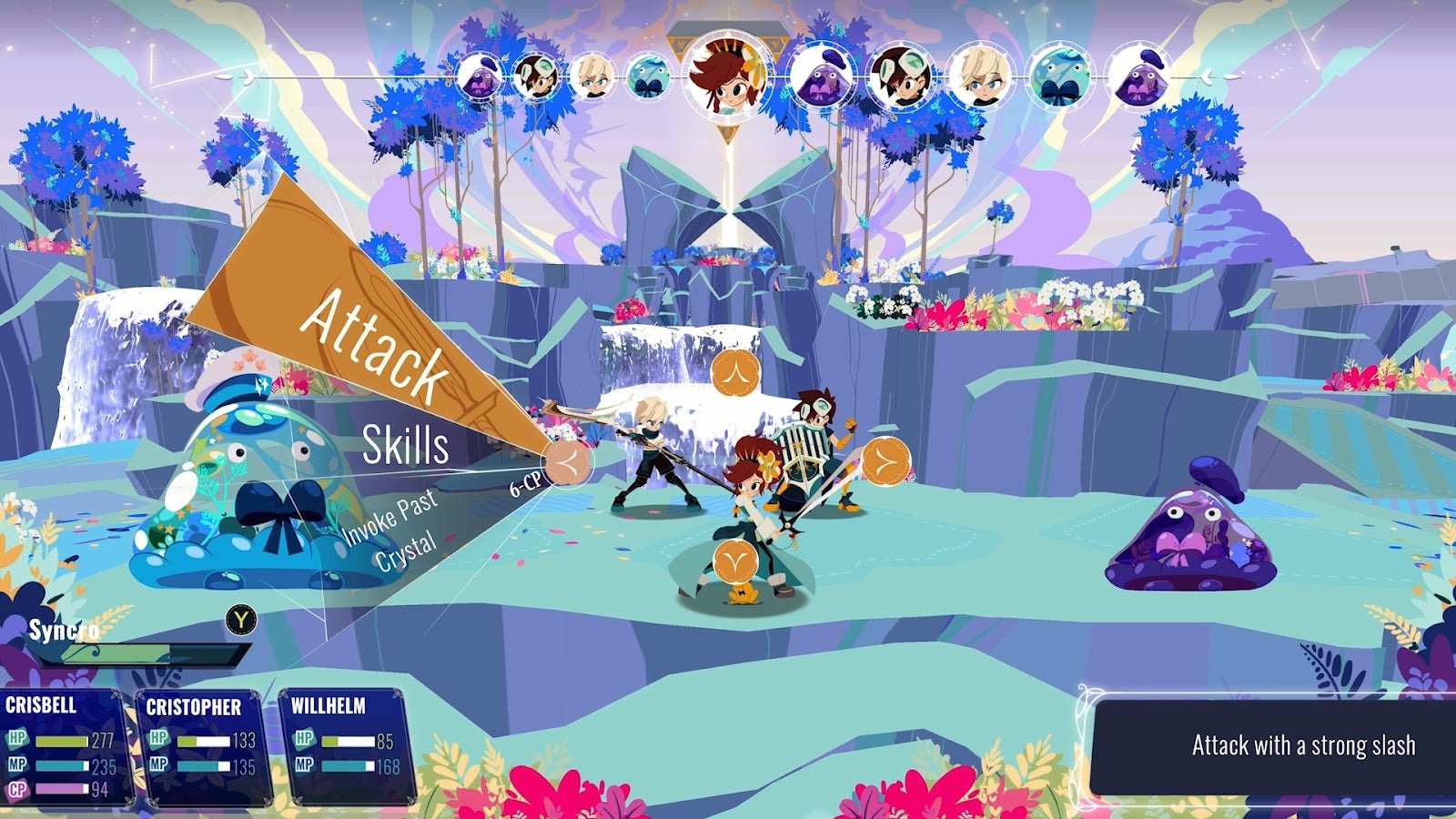
Crisbell’s time powers affect Cris Tales’ battlefields as well. Enemies attack from both sides of the screen, and the young time mage has the ability to warp her enemies into the past or future depending on which side they appear. Enemies on the left can be warped into the past, becoming younger, often less-powerful versions of themselves. Enemies on the right can be sent into the future. Jumping forward often produces more powerful versions of baddies, but the way Crisbell and her friends combine their powers can turn ageing into a powerful weapon.
For example, fellow time mage and perpetual child Willhelm can summon plants that poison enemies every turn. If Willhelm poisons an enemy and then Crisbell sends them into the future, all of the poison hits in one massive, devastating burst. One of the game’s earliest boss battles requires begoggled warrior Christopher to cast his water spell on the massive iron shield protecting a pair of baddies. When Crisbell warps them into the future that shield is weakened by rust, allowing the party to cause damage.
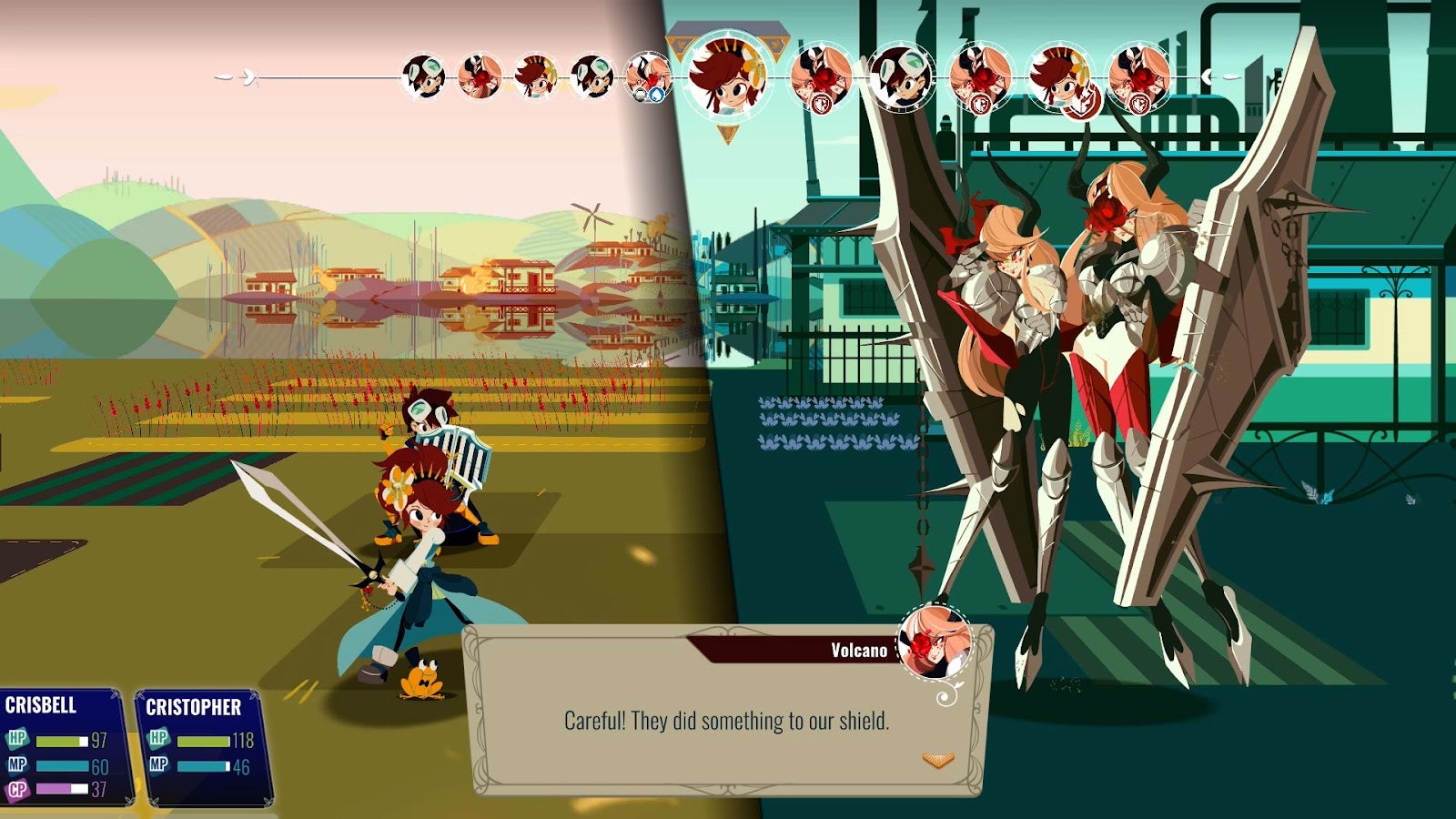
This time-tossed combat system is brilliant, turning every battle into a little puzzle of sorts. Turn-based role-playing games have a tendency to devolve into button-mashing repetition as you level up and power up, but not Cris Tales. These battles make me think, and I appreciate that. Every new skill or spell earned by party members as they level up gives you an ingenious new way to screw with the bad guys. Each new enemy encountered has to be played with in the past, present, and future to figure out the most efficient way to dispatch them. And these mechanics are more than just neat extras. You need to use them effectively to get anywhere in Cris Tales. Otherwise this cute little game will kick your cute little arse.
One of the great joys of gaming is getting to share in the experiences of other cultures.
While Cris Tales is a love letter to Japanese RPGs. It’s also a love letter to Colombia, home country of development studios Dreams Uncorporated and Syck. Its hand-drawn 2D visuals are based on real natural and man-made landmarks in the South American country. Even the name, Cris Tales, is a play on Caño Cristales, a Colombian river known for its unique coloration. Going into the game armed with this knowledge gives me a newfound appreciation for the country so often portrayed in U.S. media as the bad place where the drugs come from.
Read More: Cris Tales Transforms Beautiful Colombian Landmarks Into Its Fantasy World
At around 10 hours into what the developers tell me is a 30 to 40 hour adventure, Cris Tales continues to charm and challenge me in equal measure. Around every corner there’s a reason to reach for the screenshot button. At the end of every battle I find myself wondering if I could have timed (get it?!) my attacks better. It’s a treat for my eyes and my mind, and I can’t wait to see where it takes me next.
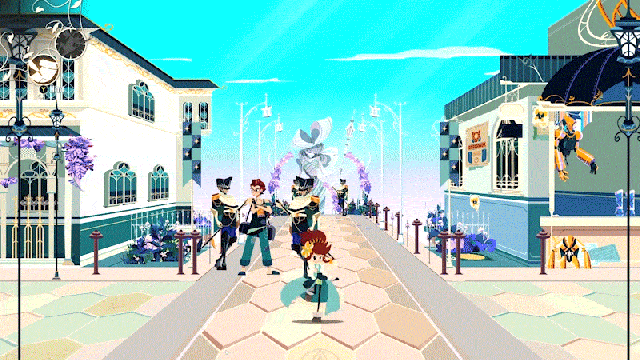
Leave a Reply